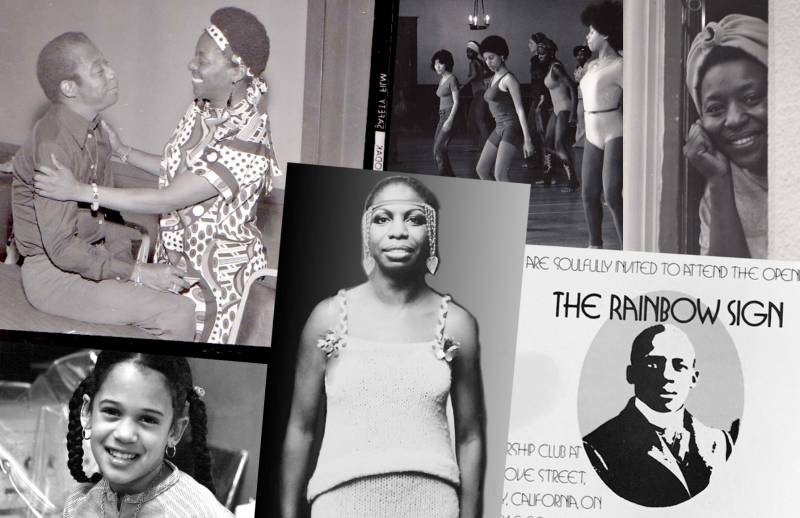This is an updated version of a story originally published in January, 2022. As Kamala Harris takes center stage as a presidential candidate and tries to tell the nation her story, we wanted to revisit The Rainbow Sign and its influence on her as a child growing up in Berkeley. Listen to this and more in-depth storytelling by subscribing to The California Report Magazine podcast.
T
oday, it’s an unassuming beige building on a busy Berkeley street. But in the 1970s, it housed a groundbreaking center for Black culture, politics and art — a place that profoundly shaped Vice President Kamala Harris’ young life.
The Rainbow Sign hosted dozens of high-profile Black luminaries, including James Baldwin, Nina Simone, Maya Angelou and Shirley Chisholm, the first Black woman elected to Congress who, in another first, went on to run for president in 1972.


Located at the corner of Grove (now Martin Luther King Jr. Way) and Derby streets in Berkeley, The Rainbow Sign was a Black-centered space that was open to all — as a performance venue, a political organizing nexus and a legendary cafe. Its founder, Mary Ann Pollar, saw it as part of a movement for the liberation of all people through art, education and community building.
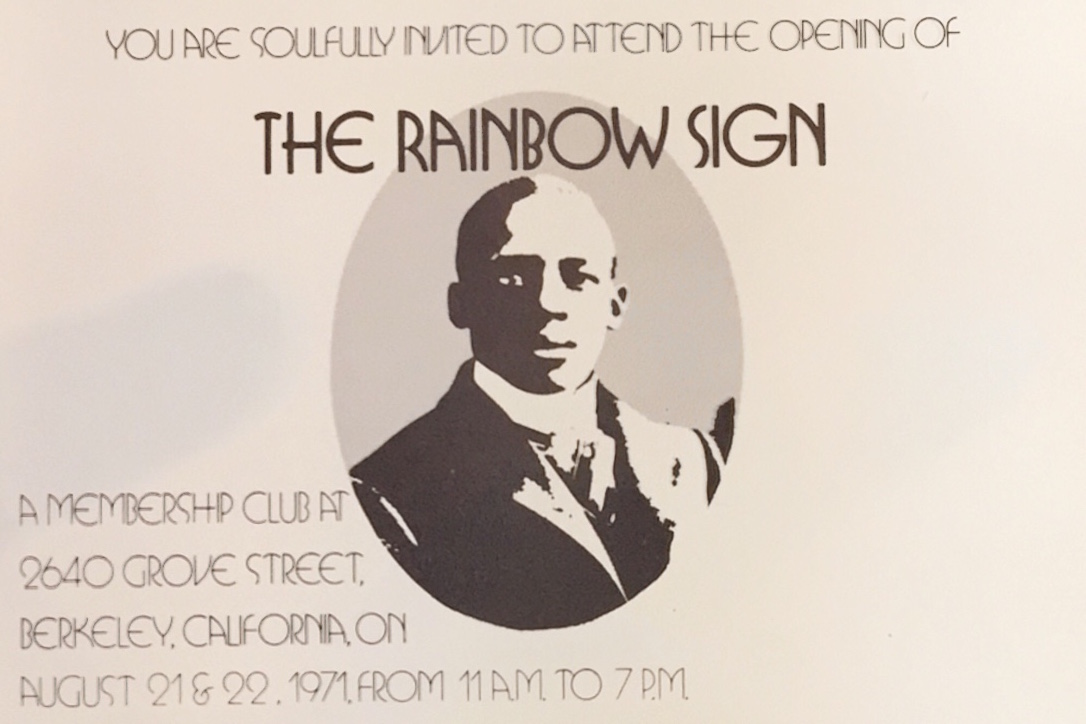
The Rainbow Sign opened its doors in 1971, but was forced to shut down just six years later, in 1977, after its founders couldn’t raise enough money to buy the building.
Despite its short existence, the venue left an indelible mark on many young people in the community who attended events in the intimate wood-paneled hall and had the unique opportunity to engage with its legendary performers and guests.
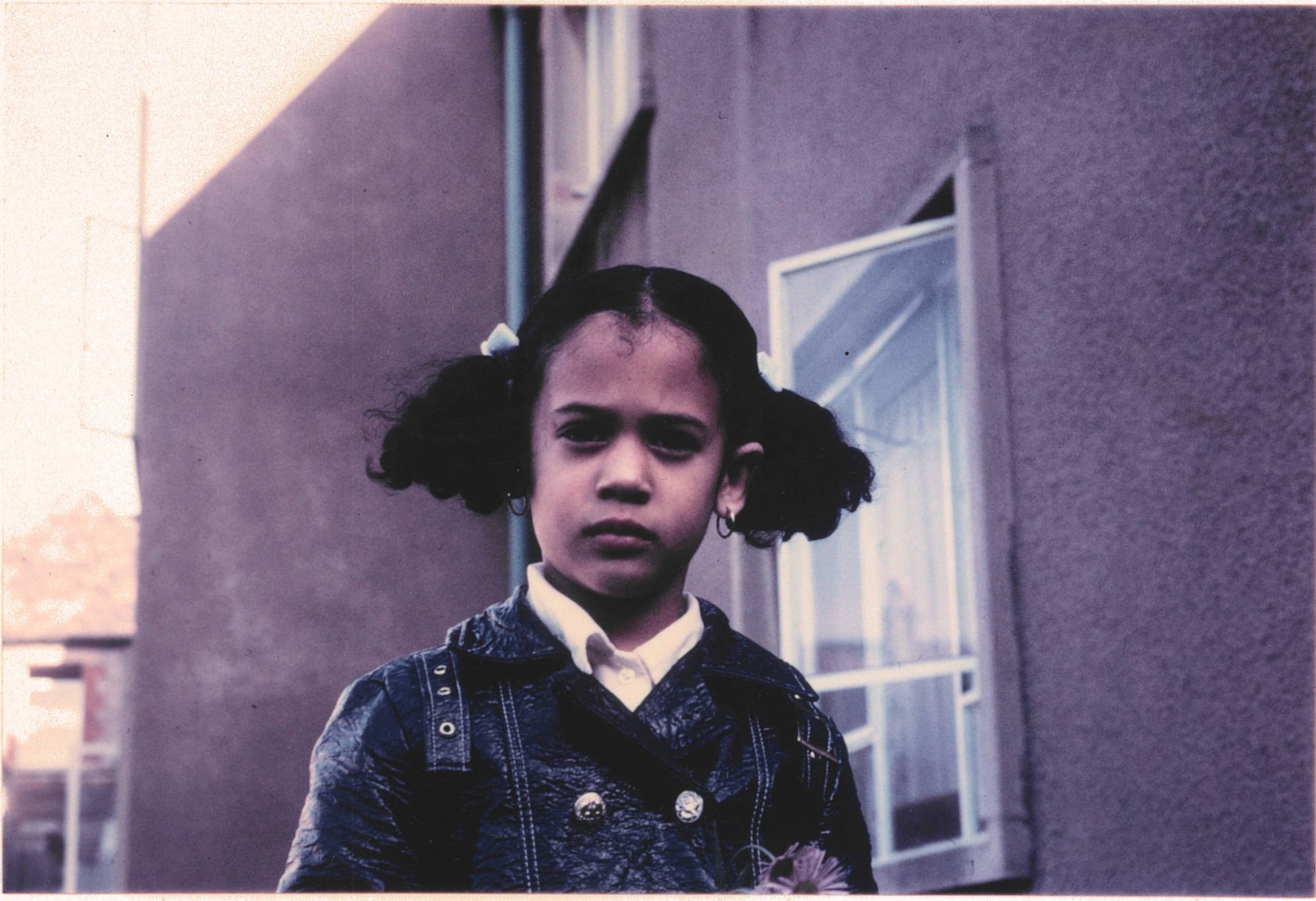
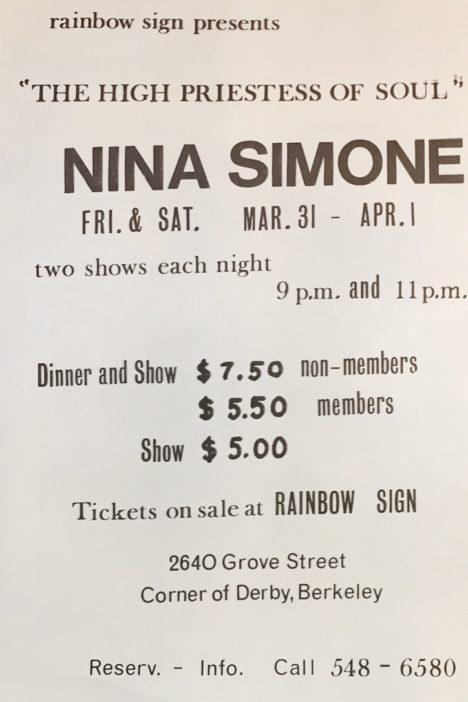
As a young girl in Berkeley in the 1970s, Harris was among those impressionable visitors. In her 2019 autobiography, “The Truths We Hold: An American Journey,” she describes her experience attending concerts and events, including one particular memory from when she was seven of seeing Nina Simone perform.
“My favorite night of the week was Thursday. On Thursdays, you could always find us in an unassuming beige building on the corner of what was then Grove Street and Derby. Once a mortuary, the building I knew was bursting with life, home to a pioneering black cultural center, the Rainbow Sign. … It was where I learned that artistic expression, ambition and intelligence were cool. It was where I came to understand that there is no better way to feed someone’s brain than by bringing together food, poetry, politics, music, dance and art.”
This week, The California Report Magazine takes you inside The Rainbow Sign to hear from some of the artists, audience members and cultural and political leaders whose lives were shaped by this remarkable California cultural landmark.
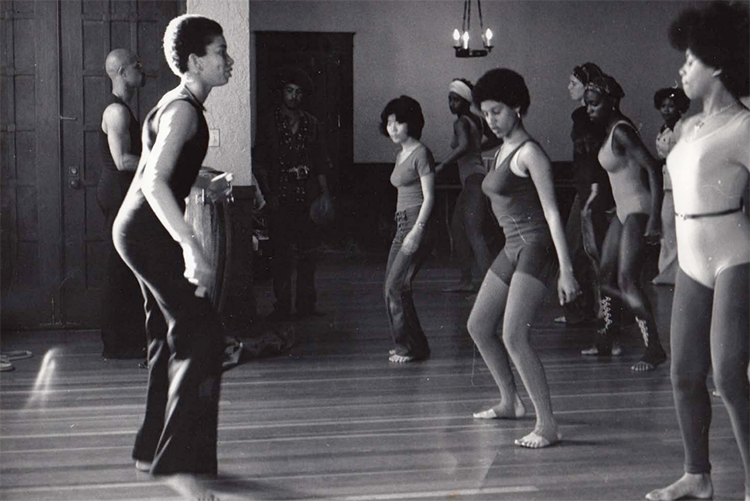
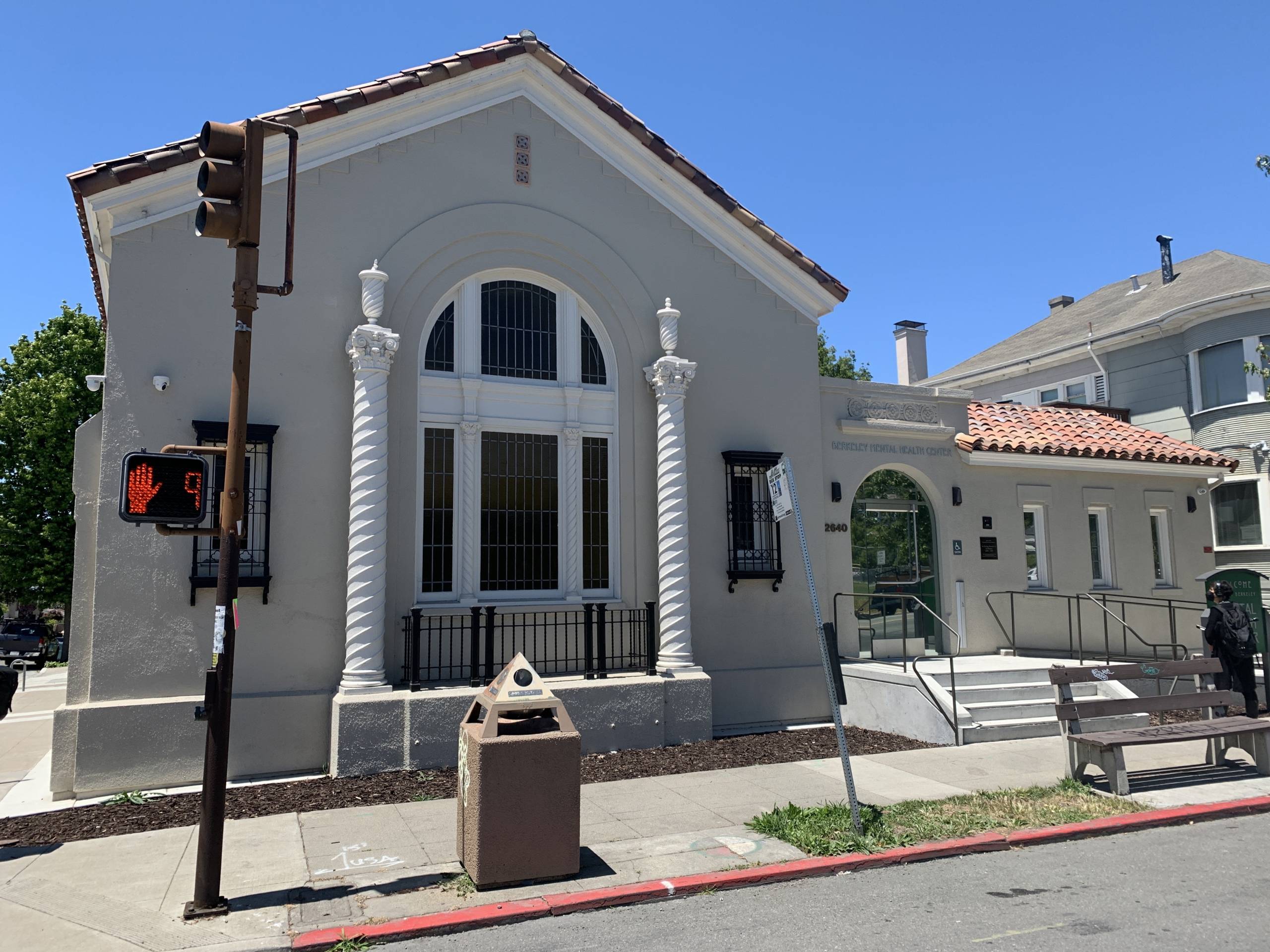
Special thanks to Tessa Rissacher and Max Lopez, who as UC Berkeley undergraduate students worked to compile an extensive online archive of documents, photographs and memorabilia from The Rainbow Sign.
Audio excerpted from “The Truths We Hold: An American Journey” by Kamala Harris, read by the author. Copyright 2019 by Kamala D. Harris. Production copyright 2019, Penguin Random House LLC. All rights reserved.
